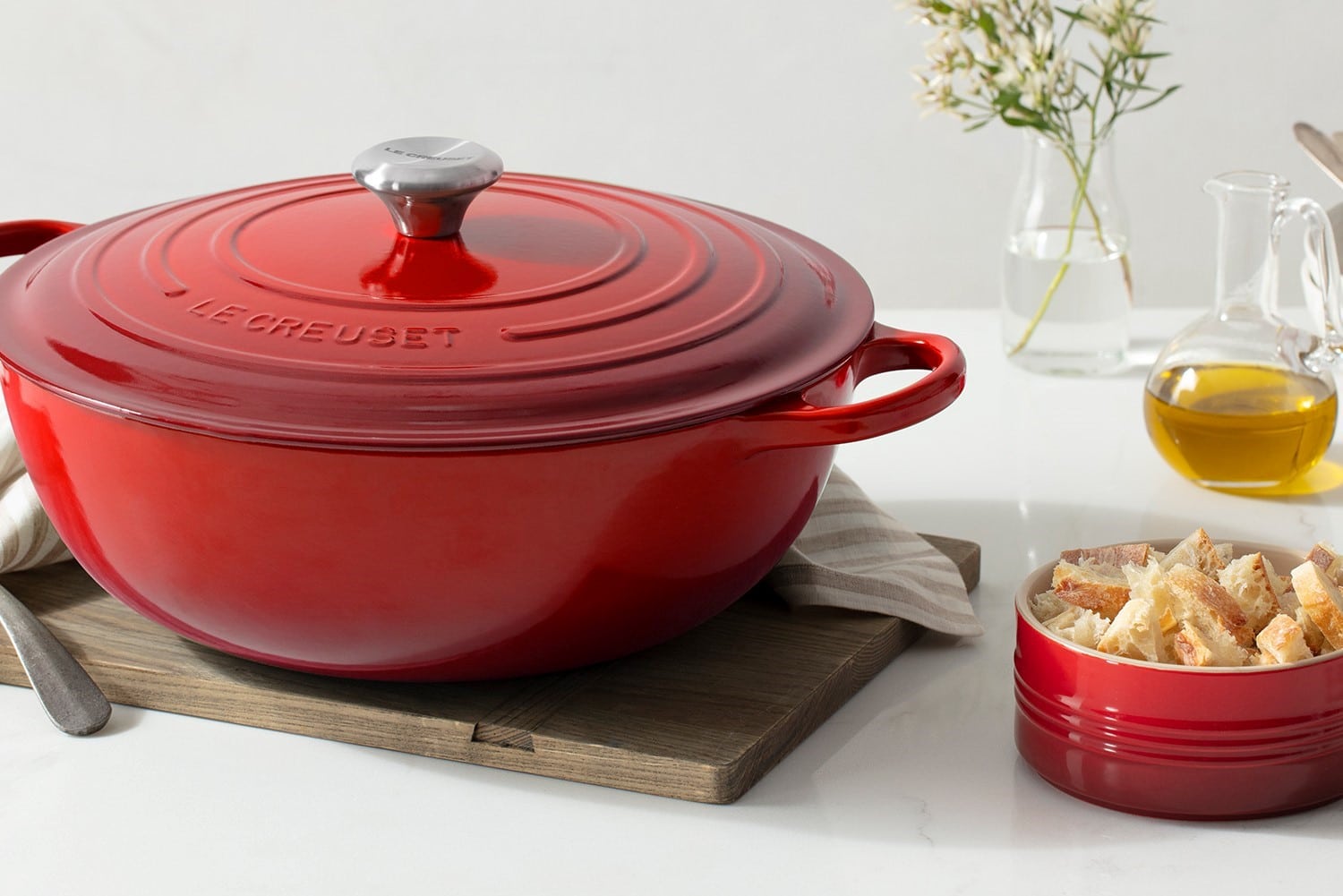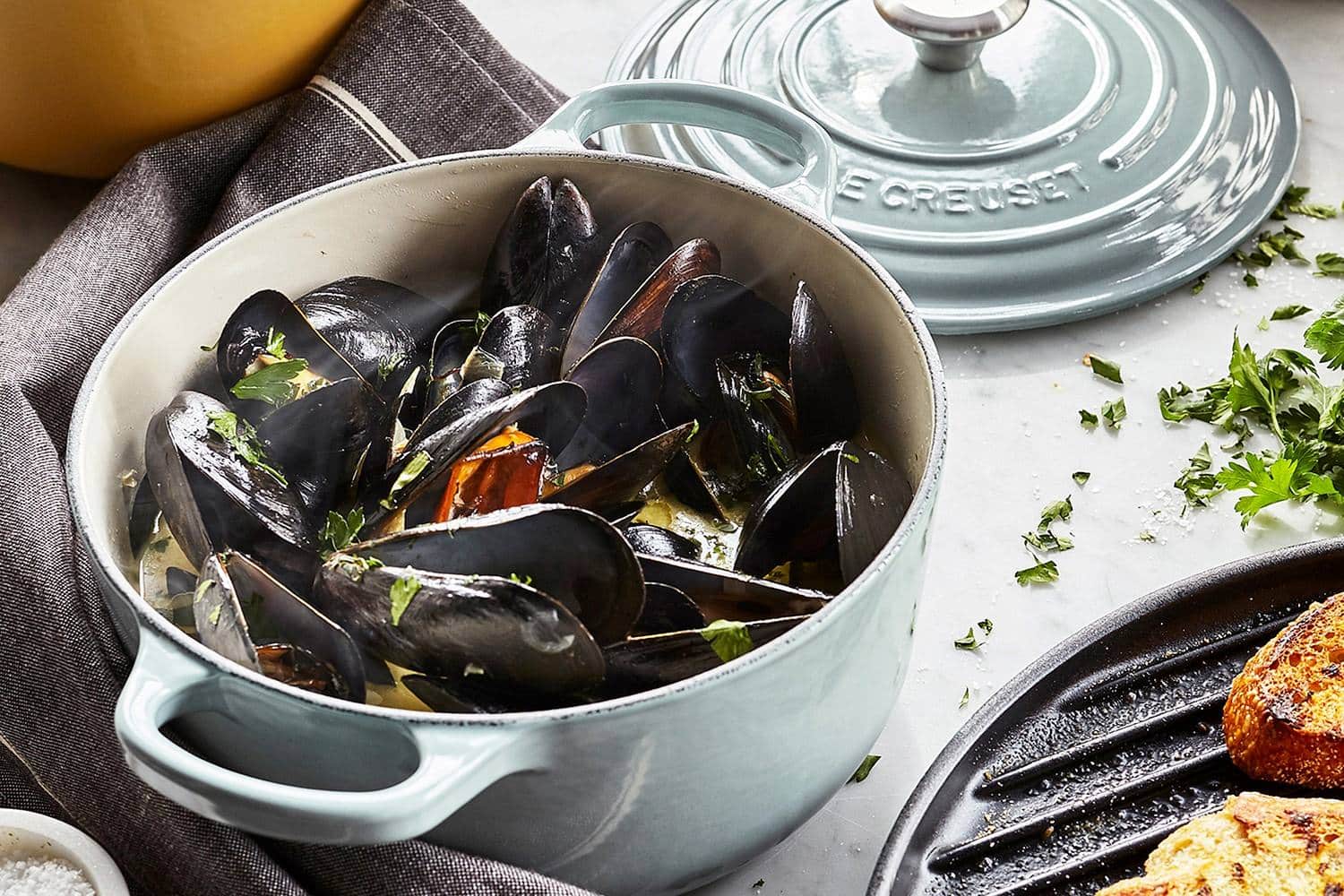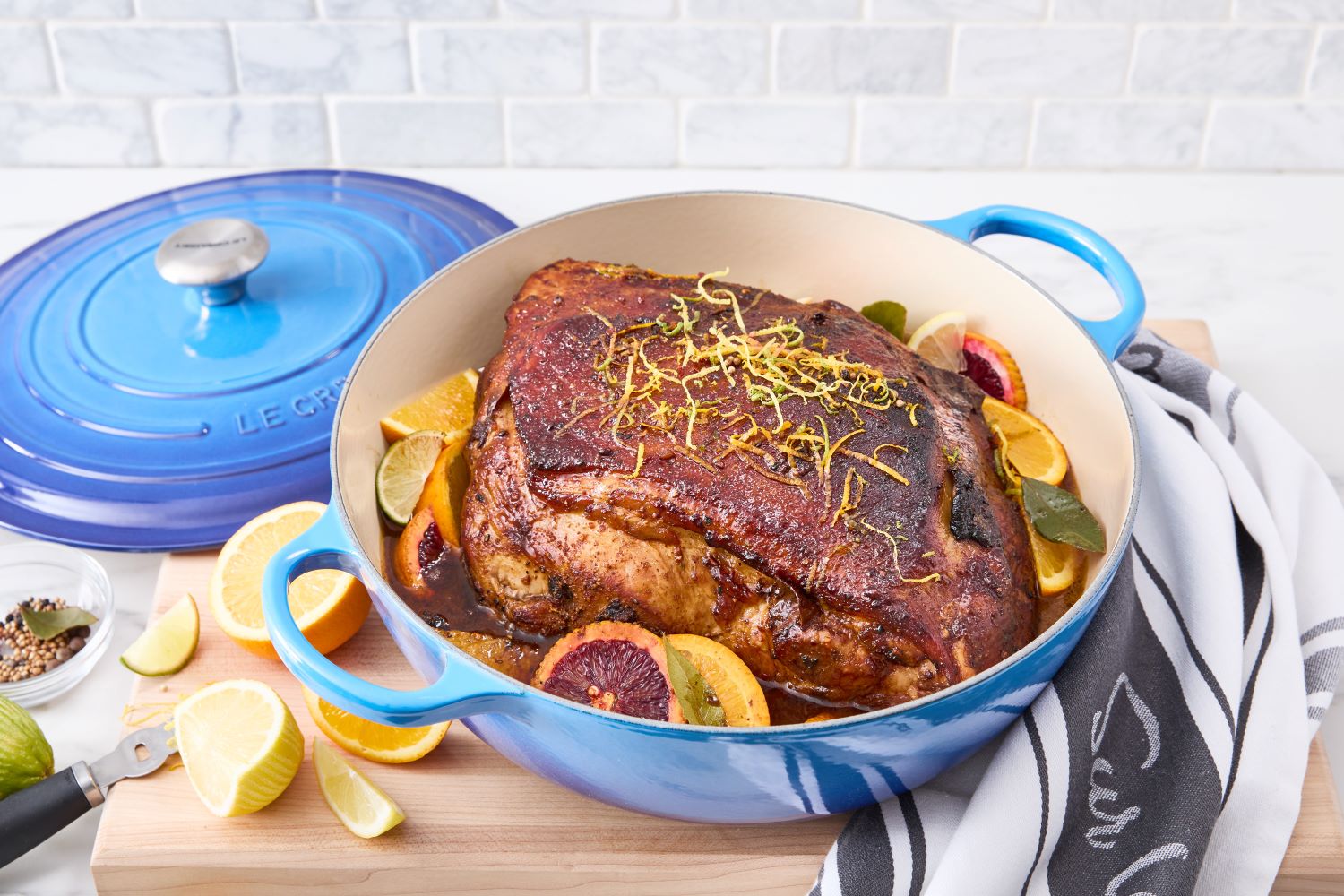Decisions, decisions.


The culinary world is full of different tools and appliances designed to help you create mouthwatering dishes, and two of the most popular options are the chef’s oven and the Dutch oven.
These versatile pieces of cookware are praised by professional chefs and home cooks alike for their functionality and durability. However, they are not always interchangeable, and each type has its own unique features that make it better suited for specific tasks.
In this article, we will delve into the differences between a chef’s oven and a Dutch oven, exploring their respective strengths and weaknesses, as well as offer guidance on which one might be the best choice for your kitchen.
Hungry for more? Explore our Le Creuset collection of heritage cookware and find the next piece for your home.

A chef’s oven, also known as a French oven or a sauteuse, is a type of cookware that combines the features of a sauté pan and an oven.
It typically has a wide, flat bottom and tall, straight sides, providing ample space for browning, sautéing and simmering ingredients. The chef’s oven is usually made from materials like stainless steel, aluminum or a combination of the two, offering exceptional heat distribution and retention.
Some chef’s ovens, like Le Creuset’s chef’s oven, are made from enameled cast iron.
The chef’s oven is versatile and can be used for a wide range of cooking tasks, including frying, braising, roasting and even baking. It comes with a tight-fitting lid that helps retain moisture and heat, allowing for even cooking and delicious results. Many chef’s ovens are also compatible with various heat sources, including gas, electric and induction cooktops as well as ovens.

The Dutch oven, on the other hand, is a heavy, thick-walled pot with a tight-fitting lid.
It is traditionally made from cast iron, but modern versions can also be found in enameled cast iron or ceramic materials. The Dutch oven has been used for centuries, and its origins can be traced back to the Netherlands, where it was used for slow cooking over an open fire.
The Dutch oven is renowned for its exceptional heat retention and even heat distribution, making it perfect for slow cooking techniques like braising, stewing and baking. Its heavy lid helps to lock in moisture and create a self-basting environment that results in tender, flavorful dishes.
Dutch ovens are compatible with a variety of heat sources, including gas, electric and induction cooktops as well as ovens and open fires.

Both chef’s ovens and Dutch ovens have their unique characteristics and are suitable for different cooking techniques. A chef’s oven is perfect for dishes that require quick and even heating, while a Dutch oven excels in slow cooking methods, providing excellent heat retention and moisture control.
Choosing between the two depends on your cooking preferences and the types of dishes you plan to prepare.
The main difference between a chef’s oven and a Dutch oven lies in their design and construction.
A chef’s oven features a wide, flat bottom and tall, straight sides, while a Dutch oven has a round, deep shape with a heavy lid.
The chef’s oven is often made from materials like stainless steel or aluminum (although sometimes you’ll see it in enameled cast iron), while the Dutch oven is almost exclusively made from cast iron and enameled cast iron, and sometimes ceramic.
Both chef’s ovens and Dutch ovens are known for their excellent heat retention and distribution, but they achieve this in different ways.
Because chef’s ovens are often made from stainless steel or aluminum, they typically have multiple layers of metal, allowing for rapid and even heat distribution.
Dutch ovens, made from cast iron or enameled cast iron, have a high thermal mass, meaning they retain heat well and provide a consistent cooking temperature. Their construction also enables even heat distribution, which prevents hot spots and promotes consistent cooking results. The heavy lid helps to lock in moisture, making it perfect for slow cooking techniques.
While both the chef’s oven and the Dutch oven are versatile pieces of cookware, they are better suited for different types of cooking. A chef’s oven is versatile and can be used for various cooking techniques, such as sautéing, frying, searing and baking. The thinner walls make it more responsive to temperature changes, making it suitable for delicate dishes that require precise temperature control. It’s also ideal for making pan sauces, as the wider surface area allows for better evaporation and reduction.
On the other hand, the Dutch oven’s thick cast iron walls provide superior heat retention, ensuring that food stays warm for longer periods. This makes the Dutch oven perfect for slow cooking methods like braising, stewing and baking. Its excellent heat retention and moisture-trapping capabilities create a consistent cooking environment for tender and flavorful dishes. Dutch ovens can also be used for frying and deep-frying due to their ability to maintain stable temperatures.
Ultimately, the choice between a chef’s oven (French oven) and a Dutch oven depends on your cooking preferences and the types of dishes you plan to prepare.
Both ovens have their unique characteristics, with chef’s ovens excelling in quick and even heating, and Dutch ovens providing superior heat retention and moisture control. When deciding between a chef’s oven and a Dutch oven, consider the following factors:
Hungry for more? Explore our Le Creuset collection of heritage cookware and find the next piece for your home.
While the article mentions the Le Creuset enameled cast iron Chef’s Oven, it does not realize that this oven is very different than the general description of chefs ovens. Instead of a ‘a wide, flat bottom and tall, straight sides’ with thin walls, the Le Creuset Chefs Oven has a narrow bottom, curved sides , a wide top, and the same thick walls as a dutch oven. Does this different specification for a Le Creuset Chef’s Oven make this a hybrid pan with its own cooking applications?